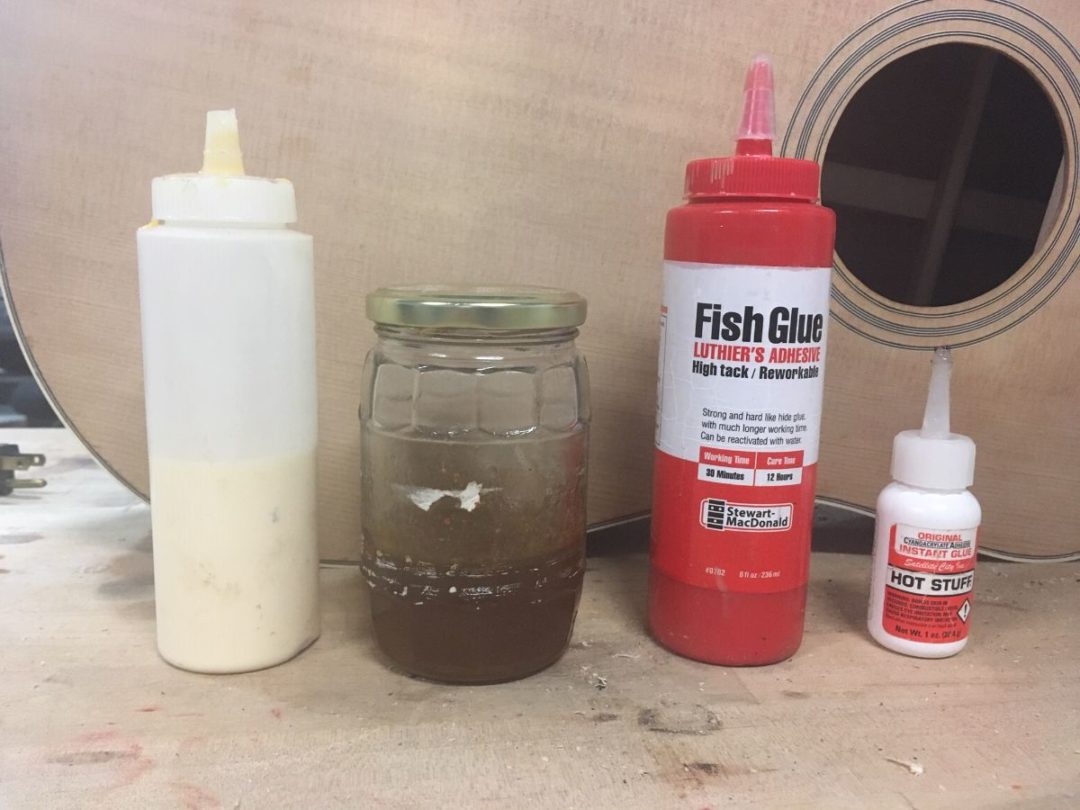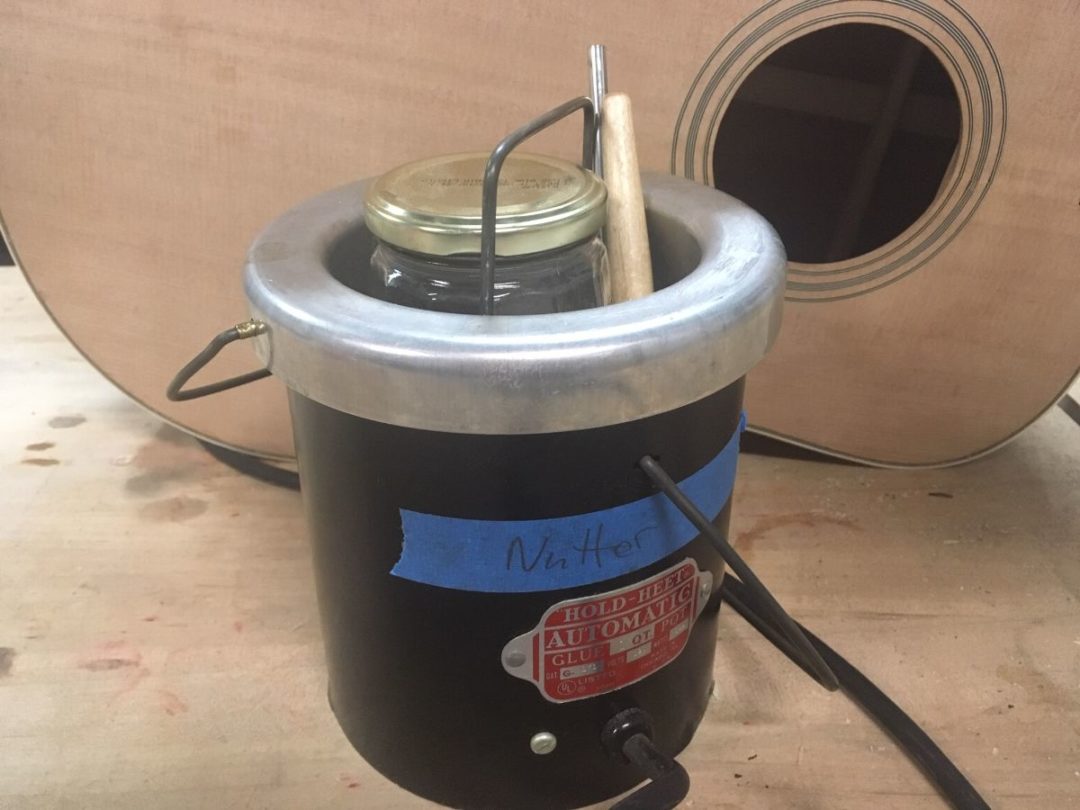(Brian Nutter is an instructor at Guitar Craft Academy Nashville and the owner of Nutter Guitars.)

Sooner or later in guitar making you’ll need to use glue. The question is, what type of glue should you use and why? Let’s take a quick look at four common types of glue used in making guitars.
4 Common Types of Guitar Glue
PVA (polyvinyl acetate) glue
The most common type of glue in modern woodworking and luthiery. Titebond is a PVA glue. It cleans up with water, it can be separated with heat and steam, and the glue join will actually be stronger than the wood around it. One drawback to PVA glue is that it doesn’t dry as hard as other glues we’re going to discuss.

Hot hide glue
This is an adhesive made from, for lack of a better way to say it, animal hides. It’s mostly used in acoustic instruments. Hide glue typically comes in flakes and needs to be dissolved in water, then heated to 145ºF. It can be thinned and cleaned up with water. It dries very hard and will even help pull joints together as it cures. Because hide glue dries hard, it helps to transfer vibration much better than PVA. The downsides are that you need a special heating pot and that the glue has a very short “open” time before it starts to set up.
Fish glue
This is very similar to hot hide glue because it’s made of, well, fish parts. Fish glue has many of the same properties as hide glue. It dries rock hard, thins and cleans with water, and, like hide and PVA, it can come apart with heat and steam. A big benefit is that fish glue doesn’t need to be heated and has a long open time, up to 30 minutes. That’s a big deal if you’re trying to glue a back on an acoustic guitar.
CA glue
CA (cyanoacrylate) is the technical term we know as super glue. It is used for inlay, binding, fret jobs and a whole host of other odd jobs. CA is the Swiss army knife of adhesives in the shop. CA, however, isn’t a good choice for structural repair. It has a tendency to shatter on impact. Unlike our previous three glues, CA is not water soluble. It will require acetone, scraping or sanding to get it off.
So there you have it. Four common sticky substances for your shop. Don’t glue yourself to the workbench. Until next time.
